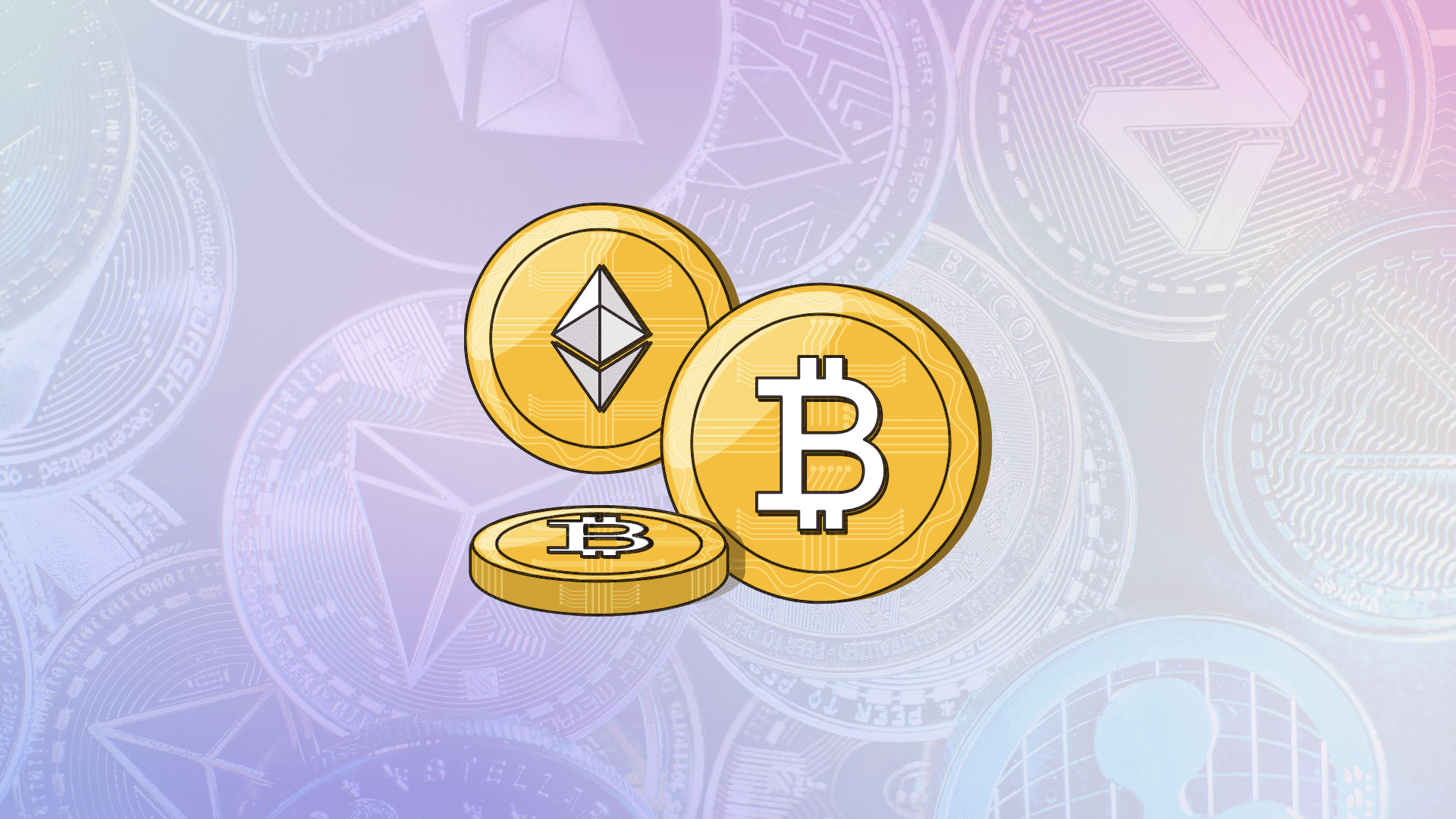At NFT Droppers, we provide the latest crypto news, in-depth project information, and comprehensive market insights. Launched in 2022, our platform covers new token launches, market trends, and detailed reviews of crypto and NFT projects. We offer reliable ratings based on 70+ evaluation factors, including tokenomics, roadmaps, and team authenticity. Whether you’re an investor or a crypto enthusiast, NFT Droppers keeps you informed with accurate, up-to-date information and expert analysis.
How to Buy Crypto in New York: NY Rules

Table of Contents
The crypto market’s a proper beast, and you’re knackered watching the big shots in New York stack millions while you’re stuck twiddling your thumbs. Bitcoin’s roaring at $96,000, Ethereum’s holding steady at $3,400, and you’re itching to get in—no faffing about, just USD and a chance to ride the wave. I’ve been in the blockchain trenches for years, cutting through the noise to turn chaos into moves any American hustler in the Empire State can nail. New York’s rules are tighter than a drum—BitLicense this, DFS that—but this isn’t some dodgy punt. It’s a straight-up guide to buying crypto in New York in 2025, packed with the latest data and a battle plan to dodge the traps. Let’s ditch the hype and get you stacking coins like a pro.
Crypto’s a $2.4 trillion game—Bitcoin’s $1.9 trillion cap leads the pack, Ethereum’s $410 billion trails, and altcoins like Avalanche (AVAX) at $19.38 scrap for the rest, per CoinDesk. New York’s the financial heart of the U.S., but it’s also the toughest nut to crack—thanks to the New York State Department of Financial Services (DFS) and its infamous BitLicense. Since 2015, any outfit wanting to trade, hold, or transmit crypto for New Yorkers needs this badge—25 firms have it, giants like Coinbase and Gemini included. You’re not here for red tape—you want action. This guide’s your lifeline, breaking down NY rules and showing you how to buy crypto without getting stung. The market’s live—let’s crack on.
Why New York’s Rules Matter
Let’s cut the crap—New York’s not your average state for crypto. The BitLicense, rolled out by the DFS in June 2015, is a beast of a rulebook. It says any firm doing “virtual currency business activity”—buying, selling, holding, or sending crypto for others—needs a license. No license, no dice. It’s why big names like Kraken and Crypto.com bolted—too much hassle, too little payoff. But the flip side? It’s kept New Yorkers safer than most—FTX, Celsius, Voyager tanked elsewhere, yet BitLicense firms stayed upright. Over 30 million use Coinbase nationwide, $2.8 billion churns daily, and NY’s greenlist locks it down to eight coins—Bitcoin, Ethereum, and six stablecoins like Gemini’s GUSD.
The DFS tightened the screws again in November 2023—exchanges can’t list coins willy-nilly; they need approved policies for listing and delisting, or they’re stuck with the greenlist. No “Sam coins” with low circulation, no bridged tokens, no exchange tokens like Binance’s BNB. It’s a slog—three years for some to get licensed—but it’s the price of playing in the world’s financial capital. You’re not a firm; you’re a punter wanting in. Good news: you can still buy, but you’re limited to the big dogs—Coinbase, Gemini, Bitstamp. This isn’t about freedom; it’s about staying legit in NY’s iron grip.
What You’ll Need to Get Started
Buying crypto in New York isn’t a casual stroll—you’ll need your kit sorted to dodge the chaos. This isn’t brain surgery, just the basics to step into the ring:
- An Exchange Account: Coinbase, Gemini, or Bitstamp—NY-approved, no nonsense.
- USD Funds: Cash via bank, card, or PayPal—your ammo to swap for coins.
- ID for KYC: Driver’s license or passport—DFS rules don’t mess about.
- A Wallet (Later): MetaMask or Trust—non-custodial, your keys, your castle.
- A Plan: $50, $100, $500—know your limit, no winging it.
That’s your gear. No fancy tech, no insider mate—just what you need to hit the ground running. Let’s break this into steps you can smash out without breaking a sweat.
Step 1: Pick Your NY-Approved Exchange
First up: choose your turf. New York’s BitLicense slashes your options—forget Kraken or Binance.US; they’re out. Coinbase is your mate—30 million users, $2.8 billion daily volume, SEC-regulated. Bitcoin’s $96,000, ETH’s $3,400, AVAX’s $19.38—all there, 2% fee on $100 means $98 in coins. Gemini’s NY-born—Winklevoss twins’ baby—100+ coins, 0.4% ActiveTrader fee, $99.60 after $100. Bitstamp’s old-school—$300 million daily, 0.50% fee, $99.50 on $100. Coinbase’s app is dead simple; Gemini’s got variety; Bitstamp’s lean.
Sign up—email, password, two-factor on. KYC’s a must—upload your ID, maybe a selfie, 10 minutes to a day. Coinbase clears fastest; Gemini’s picky if busy. You’re in—dashboard’s live, ready to fund. Pick Coinbase for ease, Gemini for options—your call, no faff.
Step 2: Load Up with USD
Cash is your fuel—get it in. Hit “Deposit” or “Funding.” Bank transfer’s free—ACH on Coinbase, 1-3 days, $100 lands clean. Debit card’s instant—3.99% fee, $100 nets $96.01. PayPal’s on Coinbase—2.5% fee, $97.50 after $100. Wire’s for big stacks—$10 fee, same day if quick. Bank’s cheapest, card’s fastest—your shout. Funds hit your “Buying Power”—$50’s a start, $100’s proper. Test it—drop $50, watch it land. You’re loaded—time to strike.
Step 3: Buy Your Crypto
Let’s pull the trigger. Open “Trade” or “Buy/Sell”—search BTC ($96,000), ETH ($3,400), or AVAX ($19.38). Market order’s your mate—grabs it now, instant. $100 on Coinbase gets 0.00051 BTC after $2 fee, 0.028 ETH, or 5.05 AVAX. Gemini? 0.001 BTC ($96) after $0.40 fee—tighter spread. Bitstamp’s 0.00052 BTC, $0.50 fee. Limit order’s sharper—set $95,000 BTC, wait for a dip. Risky if it moons, but you save if it lands.
Start with BTC or ETH—NY’s greenlist locks you to the safe bets. AVAX at $19.38? Only on Gemini or Bitstamp—Coinbase skips it. You’ve got 0.00051 BTC—$49 worth—small, but you’re in the scrap. NY rules limit your picks, but the big guns still pack a punch.
Step 4: Secure Your Stack
Don’t leave it dangling—exchanges get hit. KuCoin lost $275 million in 2020—your $49’s not safe long-term. Grab Trust Wallet—free, no KYC—12-word phrase, lock it in a safe, no screenshots. MetaMask’s browser-based—same drill, $0 setup. Send your 0.00051 BTC—$0.01 fee—or 5.05 AVAX, $0.01 on Avalanche. Hardware’s pro—Ledger Nano S Plus, $79, offline. Pair it with Trust, transfer, sleep easy. Check addresses—typos lose it all. Your $49 BTC’s Fort Knox—locked tight.
Step 5: Trade or Hodl—Your Move
Got your crypto? Decide—trade or hold. Trading’s active—buy low, sell high. BTC dips to $95,000, grab 0.00052 on Gemini, sell at $97,000—$1 profit after $0.40 fees. AVAX at $19? Sell at $20—$5.05 profit on 5.05 tokens. Coinbase’s charts show daily swings—hodl BTC if it’s climbing. DCA’s king—$25 weekly, 0.00013 BTC per, smooths the ride. X buzzes about ETF nods—bullish vibes. You’re not stuck—trade for cash or hodl for the long haul.
Step 6: Cash Out When Ready
Gains in sight? Cash out or roll it. “Sell” on Coinbase—0.00051 BTC at $97,000 nets $49.47, $1.47 profit after $1 fee. Gemini’s 0.001 BTC at $97,000—$96.60 after $0.40. Bitstamp’s $49.50 after $0.50. ACH out—free, 1-3 days—or card, 3.99%, instant. IRS wants 37% short-term gains—$0.54 on $1.47—per IRS.gov. Hodling? BTC to $100,000’s $52 off $49—6% up. You’re liquid—cash or stack, your call.
Other Ways to Buy in NY
Not keen on exchanges? P2P’s your shout—LocalCoinSwap or Paxful. Swap $100 cash for 0.00051 BTC—0.25%-1% fee, escrow holds till done. Meet in public—coffee shop, daylight—or online. Riskier—check rep—but no KYC. DEXs like Uniswap? Tricky—NY blocks most via IP. Prepaid cards work—$100 Visa from Walmart, hit BitPay, $94 in BTC after 5%. Exchanges are slickest—P2P’s for the scrappy.
NY Rules: The Fine Print
NY’s DFS isn’t playing. BitLicense firms need KYC—your ID’s logged. Greenlist locks coins—BTC, ETH, GUSD, no wild alts. Listing rules from 2023 kill self-certification—policies must pass DFS muster. No stablecoins outside the eight, no low-supply gambles. Taxes hit hard—37% short-term, 20% long-term if over $539,900 income. Crypto’s legal—buying’s fine—but dodge VPNs for banned platforms like KuCoin; fines sting. You’re legit—stick to the rules, no shortcuts.
The Risks You Can’t Duck
Crypto’s a warzone—NY’s no shield. Volatility’s brutal—BTC’s 17% drop last year wiped $16,000 off $96,000. Fees bite—$2-$5 on $100’s 5%. Scams lurk—fake apps nick funds; use coinbase.com or app stores. IRS takes its cut—$0.54 on $1.47 profit hurts. Lose your phrase? 0.00051 BTC’s dust. Risk $50 you can burn—$500’s a gamble, $5,000’s your rent.
Latest Data: NY’s Crypto Pulse
Here’s the lay of the land. Bitcoin’s $96,000, 5% up—$1.9 trillion cap. Ethereum’s $3,400, $410 billion. AVAX’s $19.38, 4.33% daily—$8 billion. DOGE’s $0.39, 10% spike—$56 billion. Coinbase’s $2.8 billion daily hums; Gemini’s $70 million ticks; Bitstamp’s $300 million holds. X posts scream ETF hype—NY’s VanEck filing fuels it. You’re in a $2.4 trillion fight—pick smart.
FAQs: Your Top Questions Sorted
Can I buy $10 worth? Yep—0.00005 BTC or 0.0029 ETH, fees in.
Is it legal in NY? Yes—BitLicense firms like Coinbase are legit.
What’s the cheapest way? Bank ACH—free vs. 3.99% card cuts.
Can I use Binance? No—Binance.US is banned in NY; stick to Gemini.
Will BTC hit $100,000? Maybe—5% weekly says it’s close, no promises.
Conclusion
You’ve got the keys—buying crypto in New York’s yours to master. Pick an exchange, fund it, buy, secure it, trade or hodl, cash out—six steps to turn $50 into a stack in USD. NY’s rules are a beast—BitLicense, greenlist, DFS grip—but you’re not a bystander; you’re in the scrap. Risks? Sure—crashes, fees, taxman’s eye. Rewards? Massive—$49 BTC to $52, $98 AVAX to $252—if you play it right. This isn’t a flutter; it’s strategy. Lock in your moves, ride the chaos, and own your slice of the $2.4 trillion pie. New York’s tough—buy like a boss.

Disclaimer: The information presented here may express the authors personal views and is based on prevailing market conditions. Please perform your own due diligence before investing in cryptocurrencies. Neither the author nor the publication holds responsibility for any financial losses sustained.
CRYPTO PAYMENT GATEWAY
 Crypto Cloud
Crypto CloudTOP EXCHANGES
BEST CRYPTO CASINO
BEST HARDWARE WALLET
 Tangem
Tangem
 Xyes Casino (Must Try)
Xyes Casino (Must Try) Stake.com
Stake.com Coins.Game Casino
Coins.Game Casino


